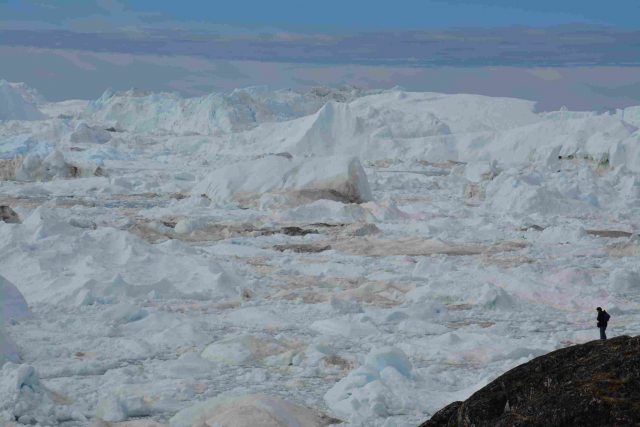All Around the World with the Most Travelled Indian
 By NITIN GAIROLA
By NITIN GAIROLA
After providing a glimpse of the forests, grasslands and deserts biomes, the final terrestrial biomes on Earth are the ice & tundra eco-regions in the polar and sub-polar belts of our planet. This is the place to visit for all the climate change naysayers such as some bombastic blonde world leaders (past & present on both sides of the pond) and the flat-Earth believers. If you want to see what climate change or planetary warming can do, then come to the Arctic first and see the giant icebergs calve with a thunderous cracking sound. It’s like watching skyscrapers fall, just that these are built of ice and not steel & concrete. It is very well understood and documented that most of the glaciers of our northern hemisphere in Greenland, Iceland, Canada, Alaska & Siberia have receded over the past 5 decades, and hence this melt is releasing more and more icebergs into the sea. Scientists have done season to season comparisons i.e. the summer glacial extent of a given year in the past with the summer extent of the current year. This time-lapse is all photographed and this is where pictures can beat audio-visual content in terms of pure drama and storytelling. But for this output to come through dramatically in the form of a multi-decade story, the ice photographer has to give his or her life to one place. Just watch National Geographic photographer James Balog’s 2012 documentary called ‘Chasing Ice’ to understand what it means to give everything to a cause that has planetary implications. What a great way to spend a life, but I digress.
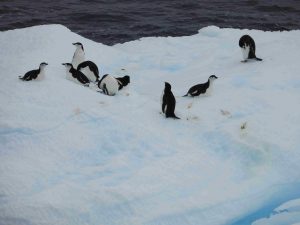
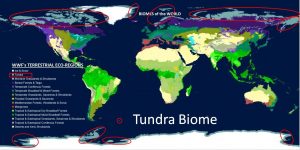
Basically our ice and our ice sheets in the Arctic and those in Antarctica are regulating our planet’s temperature. The sun’s rays bounce off the ice and keep our planet cool. The ice reflects sun’s rays a lot better than water, which absorbs it a lot more. Hence, relatively more ice on Earth will cool the planet and relatively more water will heat it. Currently, since the last Ice Age 11700 years ago, there has been a nice balance in terms of our surface ice and water levels and that shows in the mean global temperatures around the world. The average global temperatures have been very constant and stable and that is what had allowed man to settle down and practice agriculture which lead to the building of cites, civilizations, empires and now nations. This Holocene epoch since the Ice Age has been so stable a period that it has fooled us in believing that this is how the Earth has always been. But we have to remember that the Earth is 4500,000,000 years old (that’s 4.5 billion) and so the last 11,700 years is just a blip in the geologic timescale.
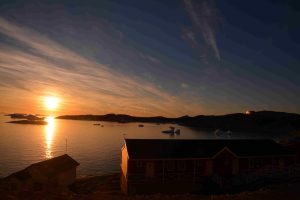
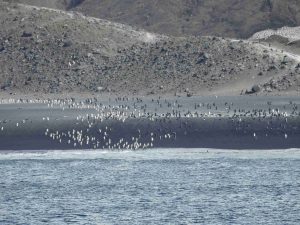
Penguin colony of approx 50,000
It will not always be this stable and that’s just how the Earth is, since the biggest contributor to Earth’s climate is actually in the sky – The Sun. And it just so happens that Earth’s distance to the Sun changes every around 100,000 years. So someone reading this may conclude that we can’t do much about the climate since it is all up to the Sun. Well, that’s only half true and it’s a great escape route for those who don’t believe in climate change. Firstly, our burning of fossil fuels for transportation and industry is disturbing the average temperatures and leading to greater CO2 concentrations in the atmosphere. This greenhouse gas traps heat and is thus warming the world in what otherwise could have been a colder planet, moving from an interglacial (today) to a glacial period. This is the scale of human activity that we are actually altering the climate trend of the Earth with our intense actions and the worry is that no one knows where this is headed. And when we will get to know, it may be already too late as the Earth may be caught in an unstoppable positive feedback loop, wherein some heating leads to more heating and so on – sort of like reaching a tipping point. And when you can’t predict the future on a planetary level, it is prudent to be humble and cautious.
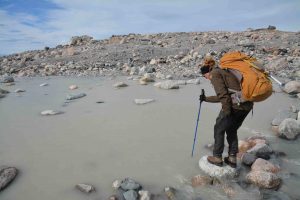
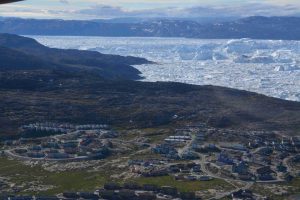
Also it is not just about the polar ice biome melting. Our heating planet is also thawing the permafrost found primarily in the tundra region. The tundra is a cold polar and sub-polar biome which has a short growing season in summers with low rainfall. Hence it only supports low-lying vegetation such as mosses, lichens and small shrubs and has no trees. Besides the polar & sub-polar tundra (formed due to latitude), there are also the alpine or mountain tundra eco-regions which form due to their high altitude up in the mountains. Huge swathes of land in Canada, Alaska and Siberia fall under the polar tundra region.
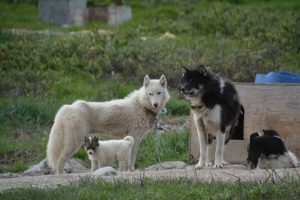
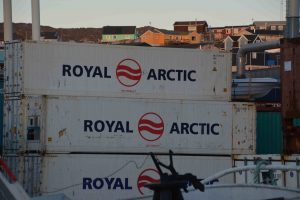
Now the reason why the tundra is so critical to the health of Earth is that its surface has permafrost – and lots of it. Permafrost is soil, sand or rock that remains in a frozen state continuously for 2 or more years and it binds a lot of elements together, including plant material, via its frozen ice. The problem is that when it melts, this permafrost releases super massive amounts of carbon dioxide and methane into the atmosphere – both greenhouse gases. With such a thaw, the ground can collapse too thereby forming massive depressions that are scientifically referred to as thermokarst landscapes. The permafrost can lead to soil erosion and landslides too in alpine tundra regions of mountains besides breaking down human infrastructure. Finally the impact on the surface vegetation naturally has an impact on the wildlife as well that depends on it, which can break down eco-systems.
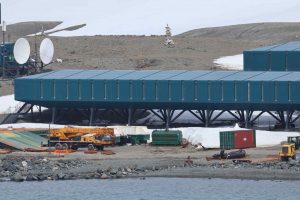
Some of the largest permafrost lands in the world are in the Yukon and Mckenzie River basins in Alaska and Canada, and in the Ob, Yenisei and Lena basins in Russian Siberia and these places are of special interest to climate scientists for the reasons just mentioned. But as per many scientists, there is possibly another reason to worry (a lot) since as per them, there is something far more ominous lying in wait inside the permafrost, waiting to be unchained. You see, permafrost holds ancient bacteria and microbes too, and if these ‘micro beasts’ are released due to all the thawing, they could wreak havoc on humanity and other living things on Earth since none of us would have immunity against them.
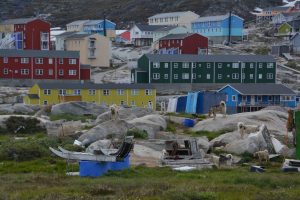
So you can debate as much as you want as to whether it is the sun that causes warming or we humans contribute to it too and are tipping the scales just enough to end in an apocalypse. In any case, hard climate data since the 1850s shows that we are altering climate & temperature patterns by increasing greenhouse gas emissions which is in turn melting the ice and thawing the permafrost. And if all this carbon in the atmosphere were not enough, in order to generate our energy we are using more and more land by cutting forests and taking away our only real carbon sinks (other than the oceans), not to mention making it hell on Earth for biodiversity and for humanity that lives in unliveable cities and towns. So if you still don’t believe in climate change, just visit our polar regions since they are the ground zero of global warming and the place to witness climate change in action.
(Nitin Gairola is from Dehradun and has travelled the natural world more than almost any Indian ever. He has set world travel records certified by India Book of Records, has written for Lonely Planet, and holds National Geographic conservation certifications. He is also a senior corporate executive in an MNC and in his early days, used to be a published poet as well. More than anything else, he loves his Himalayan home. Reach him at: www.facebook.com/ MostTravelledIndian/)

